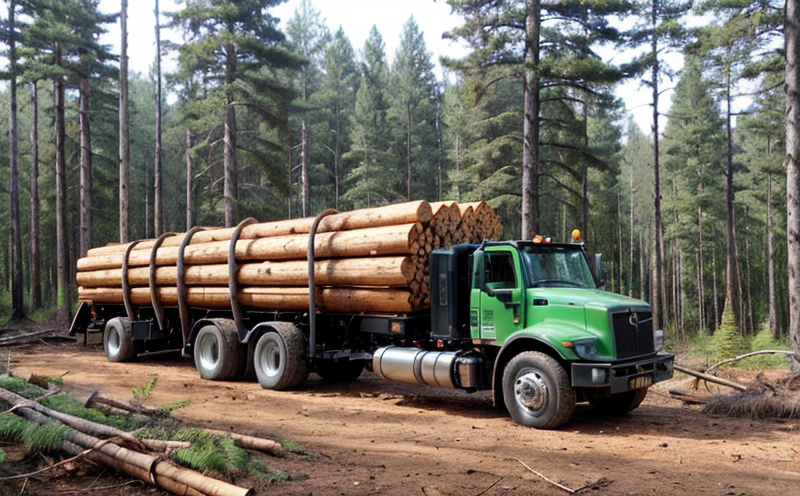Timber Surface Roughness Testing
The testing of timber surface roughness is a critical aspect in ensuring product quality and compliance with industry standards. Timber products such as flooring, furniture, and structural components often require precise control over their surfaces to ensure durability, aesthetic appeal, and performance. The measurement of surface roughness helps manufacturers meet specifications that are essential for the end-user experience.
Surface roughness refers to the microscopic undulations on a timber sample's surface. This characteristic can influence how wood interacts with its environment, including wear and tear, adhesion properties, and even appearance. In quality management within the forestry sector, understanding these parameters is vital for maintaining consistent product quality across production batches.
For R&D engineers working on new timber products or improvements to existing ones, precise measurements of surface roughness can provide insights into how different manufacturing processes affect the final product's performance and longevity. Compliance officers must ensure that all produced items meet relevant standards set by organizations like ISO (International Organization for Standardization) and ASTM (American Society for Testing and Materials).
Surface roughness is determined using specialized equipment designed to capture fine details of wood surfaces accurately. These instruments typically employ profilometry techniques where a probe scans over the surface, recording depth variations at various points. The resulting data can then be analyzed statistically or graphically to determine whether the timber meets predefined criteria.
The importance of this test cannot be overstated in ensuring that products comply with regulatory requirements and satisfy customer expectations regarding appearance and functionality.
| Parameter | Description |
|---|---|
| Profile Method | This method involves tracing the surface of a sample using a diamond-tipped stylus on an X-Y plotter. It provides detailed profiles that help in evaluating roughness. |
| Surfacerometer Method | A surfacerometer measures the height of the wood's peaks and valleys by comparing them to a reference plane perpendicular to the surface. This technique is useful for quantifying both macroscopic and microscopic roughness characteristics. |
| Measurement Units | Description |
|---|---|
| Ra (Arithmetic Mean Roughness) | This value represents the average height of irregularities within a defined area, providing an overall measure of surface smoothness. |
| Rz (Maximum Peak-to-valley Height) | Reflects the highest peak minus the lowest valley in a given sampling length, giving insight into extreme roughness values. |
Scope and Methodology
The scope of timber surface roughness testing includes evaluating various parameters that contribute to the overall quality of the wood products. Key areas covered by this service involve assessing both macroscopic and microscopic aspects of the timber's surface texture.
- Evaluation of roughness across different grain orientations.
- Measurement of roughness on varying parts of the timber piece such as edges, faces, or specific regions identified for quality control purposes.
- Analysis of how environmental factors like moisture content and temperature affect surface roughness during processing stages.
The methodology employed in this testing involves selecting appropriate sampling locations based on the intended use of the timber product. Specimen preparation is crucial; it ensures that all surfaces to be tested are clean, dry, free from defects, and representative of typical conditions encountered throughout production processes.
Once prepared specimens are ready for analysis, they undergo measurement using advanced profilometers capable of capturing minute details. The collected data is processed according to standard protocols defined by relevant international standards such as ISO 4287:1996 (Geometrical Product Specifications - Surface Texture).
Benefits
- Enhances Product Quality: By measuring and controlling surface roughness, manufacturers can ensure that their products consistently meet high standards of quality.
- Promotes Consistency: Standardized testing procedures help maintain uniformity in production batches, reducing variability between individual units within a series.
- Facilitates Compliance: Adherence to specified surface roughness limits ensures that products comply with relevant regulations and industry guidelines.
- Improves Durability: Properly controlled roughness levels can extend the lifespan of timber products by minimizing wear caused by contact stresses during use.
- Enhances Aesthetics: Smooth surfaces contribute to a more visually appealing appearance, which is particularly important for decorative items like furniture and cabinetry.
- Saves Costs: Early detection of defects through thorough surface roughness testing can prevent costly rejections at later stages in the manufacturing process.
Why Choose This Test
Selecting timber surface roughness testing as part of your quality assurance program offers numerous advantages. Firstly, it allows for precise control over one of the key characteristics that influence how wood behaves in real-world applications. Secondly, by incorporating this test into your workflow, you demonstrate commitment to excellence and reliability, which can enhance customer satisfaction and build trust among stakeholders.
Moreover, choosing to partner with a reputable laboratory ensures access to state-of-the-art equipment and experienced personnel who stay updated on the latest developments in testing methodologies. This partnership also means that you benefit from expert advice tailored specifically to your business needs, helping you make informed decisions regarding product development, manufacturing processes, and quality assurance practices.
In conclusion, investing in timber surface roughness testing is an intelligent step towards achieving superior product performance while meeting stringent industry requirements.





